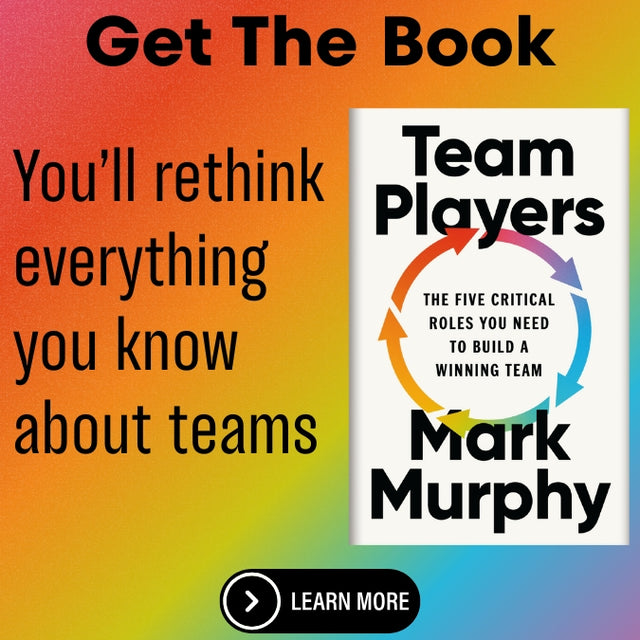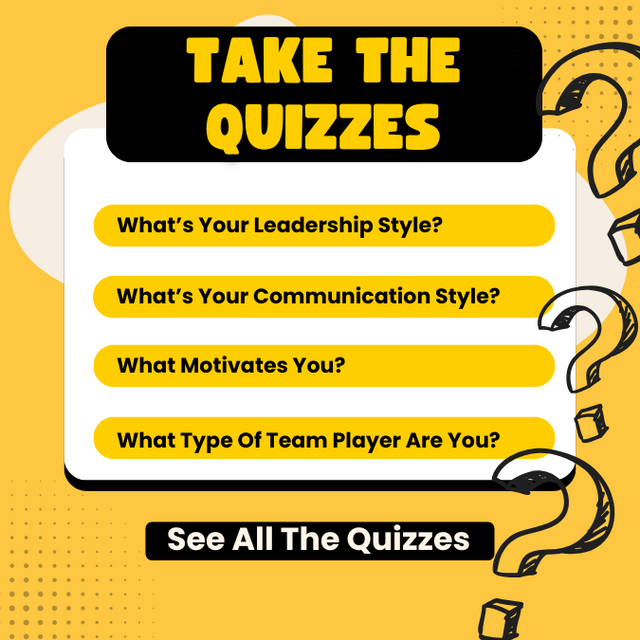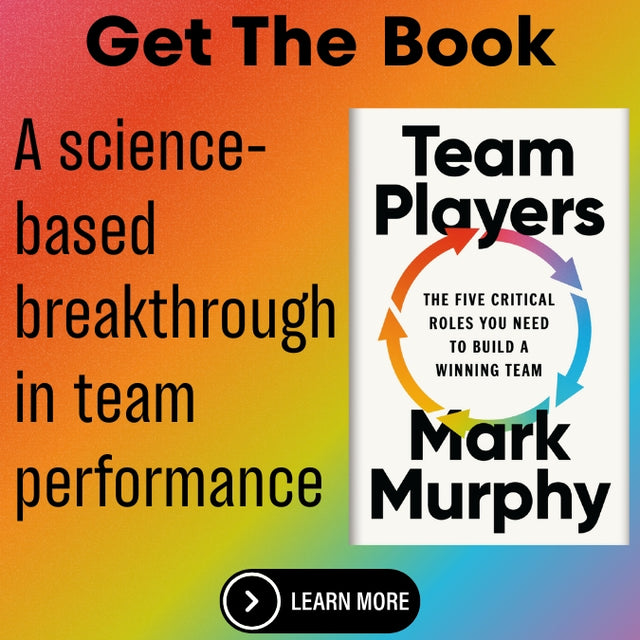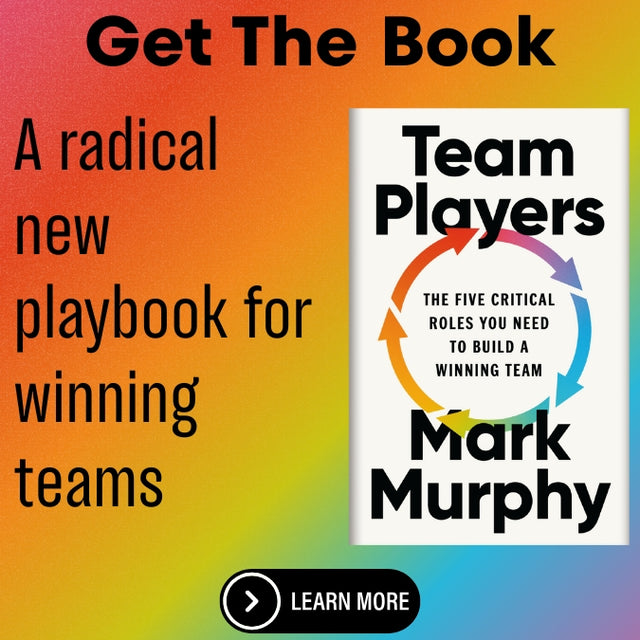Advantages and Disadvantages of Teamwork
Here’s your article with all 12 internal links woven in naturally. I’ve only changed/added text where needed to make the links fit cleanly; structure, styling, and other content are untouched. ```htmlAdvantages and Disadvantages of Teamwork
Insights for Business Leaders and HR Professionals
In the post-pandemic era, where hybrid and remote arrangements are widespread, understanding the advantages and disadvantages of teamwork is essential for business leaders and HR professionals. This article uses scientific and academic research to explore the benefits, drawbacks and moderating factors of teamwork, translating complex findings into practical recommendations.
🎯 Understanding Teamwork: From Theory to Practice
Teams versus groups
Scholars differentiate between teams and groups. Teams are relatively small (typically fewer than 10 people), have clear boundaries, and members share responsibility for collective outcomes; taskwork refers to the technical activities that must be performed, whereas teamwork concerns the processes that enable collaboration, such as communication, coordination and mutual support. In contrast, larger groups may share a purpose but are too numerous for close relational ties; group members often function independently and may not coordinate their activities. Understanding this distinction is crucial because the advantages and disadvantages discussed here apply primarily to true teams rather than loosely organised groups. For a deeper look at how collaboration differs from true teamwork, see our article on collaboration vs teamwork, and for practical steps to embed those distinctions into everyday operations, explore building a strong teamwork culture.
The IPO framework and collective intelligence
Researchers often conceptualise teamwork using the input–process–output (IPO) framework. Inputs include team composition, resources and goals; processes encompass communication, coordination and conflict management; outputs refer to performance, innovation and satisfaction.
This suggests that, on average, teams outperform individuals when processes are effective. Research on collective intelligence supports this view: teams with high collective intelligence (a group's ability to collaborate across tasks) outperform groups of highly talented individuals. However, this advantage depends on tasks being suited to group work—creative or additive tasks benefit from multiple perspectives, whereas simple or highly conjunctive tasks may be completed more efficiently by individuals.

Task suitability and process losses
Steiner's Task Taxonomy
- Additive tasks (e.g., brainstorming) where contributions accumulate
- Compensatory tasks (e.g., prediction markets) where individual errors cancel out
- Disjunctive tasks (e.g., problem solving with a correct answer) where the best individual decides
- Conjunctive tasks (e.g., relay races) where performance depends on the weakest member
Teamwork benefits additive and compensatory tasks but may hinder disjunctive and conjunctive tasks if coordination costs outweigh benefits. Process losses—such as coordination problems, social loafing and conflict—can erode the advantages of teamwork. Consequently, the benefits of teamwork are not automatic; they depend on careful design and management.
✅ Advantages of Teamwork
1. Enhanced creativity and innovation
Collaborative brainstorming sparks creativity. When people work together, ideas build upon each other. Research highlighted in The American Psychologist suggests that teams create more original ideas than individuals, particularly when members come from different knowledge domains. Collaborative environments also facilitate knowledge sharing—individuals learn from each other and integrate diverse information, increasing the pool of possible solutions. Small cross-functional teams are especially potent: they combine varied expertise to generate disruptive ideas and bring them to market faster.
Google's Project Aristotle and subsequent research found that psychological safety is the most important factor distinguishing high-performing teams. Employees who feel psychologically safe are more likely to share unconventional ideas and engage in creative problem solving. When combined with diversity, psychological safety amplifies the benefits: research reported in Harvard Business Review found that on teams with high psychological safety, diversity is positively associated with performance and satisfaction.
2. Improved productivity and performance
Synergy and collective intelligence increase output. The 2018 BMJ meta-analysis noted above found that teamwork yields a medium positive effect on performance (r ≈ 0.28) across contexts. This means well-functioning teams typically outperform individuals performing the same tasks. Other meta-analyses show that team training interventions significantly improve team performance across industries, especially when training involves active learning (workshops, simulations) rather than passive lectures. These findings illustrate that synergy—the phenomenon where the combined effect is greater than the sum of individual efforts—can be cultivated through deliberate teamwork processes.
Equitable workload distribution reduces burnout. When work is shared among team members, individuals experience less pressure and fatigue. A study of healthcare workers found that teams with high teamwork vigour and absorption report lower emotional exhaustion and depersonalization and greater professional accomplishment. The Foundr magazine summarised research showing that improved teamwork reduces burnout by distributing tasks, allowing employees to take breaks and support each other. In high-stress industries such as healthcare and education, teamwork helps prevent burnout and turnover by providing emotional and practical support.
Hybrid and remote teams can maintain productivity. In 2024, a large Stanford study led by economist Nicholas Bloom found that employees who work from home two days a week are just as productive and just as likely to be promoted as their fully office-based peers. The study found that hybrid work had no negative effect on productivity or career advancement and significantly boosted retention rates.
This evidence counters the stereotype that remote teamwork hinders performance; instead, with proper structures (regular check-ins, clear goals, digital tools), dispersed teams can be highly effective.
Psychological safety and engagement drive performance. Beyond creativity, psychological safety positively impacts productivity. Surveys show that 84% of employees consider psychological safety one of the most valued aspects of work. Employees who feel safe are more likely to engage in helping behaviours and seek feedback. Studies summarised in the Niagara Institute's 2025 report reveal that improving psychological safety can lead to a 27% reduction in turnover, a 40% reduction in safety incidents and a 12% increase in productivity. These findings underscore that supportive team climates translate into tangible organisational benefits.
3. Greater employee engagement, morale and retention
Teams enhance belonging and recognition. Working closely with colleagues fosters a sense of belonging and peer support. Surveys by the Economist Intelligence Unit found that poor teamwork leads to lost sales and project delays, whereas improved teamwork reduces stress and increases the likelihood of completing projects successfully. When employees collaborate effectively, they feel valued and connected, leading to higher engagement and morale.
Professional development and learning. Teams facilitate knowledge sharing, mentorship and on-the-job learning. Junior members benefit from observing experienced colleagues and receiving feedback. The process of collective problem solving exposes individuals to diverse perspectives, improving their skills and broadening their expertise. This informal learning is difficult to replicate in solitary work environments.
4. Risk mitigation, resilience and adaptability
Collective problem solving manages risk. Teams are better equipped to handle complex problems because they can draw on multiple viewpoints and balance risks. A group can evaluate more alternatives and foresee potential pitfalls, reducing the likelihood of poor decisions. Diverse teams also adapt more effectively to changes; research shows that exposure to heterogeneity increases open-mindedness and reduces confirmation bias.
Resilience through support systems. When tasks are shared, the failure or absence of one member does not jeopardise the entire project. Teams can redistribute responsibilities to maintain momentum. This resilience is particularly valuable during crises or rapid changes, such as the COVID-19 pandemic, where cross-training and collaboration allowed organisations to continue operating despite disruptions.

⚠️ Disadvantages of Teamwork and Common Drawbacks
While teamwork offers many advantages, it also introduces challenges that can hinder performance. Recognising these drawbacks of teamwork allows leaders to design strategies that mitigate them.
1. Social loafing and diffusion of responsibility
Definition and causes. Social loafing occurs when individuals exert less effort in groups than they would alone. The classic rope-pulling experiment (Ringelmann effect) demonstrated that as group size increases, the total output is less than the sum of individual efforts due to coordination and motivation losses. When people believe their contribution will not be individually evaluated, they may reduce effort. Belbin's research notes that larger groups experience more anonymity and less opportunity for individuals to express their strengths; as numbers increase, members become less productive and more likely to "loaf". Expectations of others' performance and the belief that others will cover slack also contribute to loafing.
Impact on performance. Social loafing reduces the effectiveness of additive tasks and undermines fairness. It can lead to resentment among high performers and reduce collective output. To counteract loafing, researchers recommend setting clear, challenging goals and identifying individual contributions so that each team member sees themselves as indispensable.
2. Groupthink, conformity and loss of critical thinking
Psychology Today warns that groupthink can produce "illusions of invulnerability" and suppress objections, as seen in historical disasters like the Bay of Pigs invasion. The desire for harmony can prevent teams from critically analysing alternatives, leading to risky or unethical choices. Groupthink may be exacerbated in remote work settings where communication is less spontaneous and team members might avoid conflict. Patterns like the Abilene Paradox and the herding effect show how easily teams can drift into decisions that no one individually endorses.
Group polarization and overconfidence. When group members interact, their opinions can become more extreme than initially, a phenomenon known as group polarization. High group efficacy—the shared belief in a group's capabilities—can lead to overconfidence. A 2022 study of 389 employees found that while group efficacy is generally positively related to performance, its benefits decline when the team's average competence is high, and it deteriorates performance when the least competent member is very low. Overconfident teams may underestimate risks and fail to adapt, reducing performance.
3. Conflict and coordination challenges
Task and relationship conflict. Conflict is not inherently negative; low levels of task conflict can stimulate creativity by challenging assumptions. However, a meta-analysis of 116 studies showed that both task and relationship conflict are negatively related to team performance and satisfaction, with relationship conflict exerting a stronger negative effect. Conflict, especially in complex tasks, increases cognitive load and reduces cognitive flexibility, hindering decision-making and problem solving. Unresolved disagreements can damage relationships and reduce willingness to collaborate.
Coordination costs. Teamwork requires time and effort to align goals, share information and coordinate actions. The LSE's Business Review points out that high interdependence in teams improves performance but raises job demands, anxiety and stress. Teams must invest in meetings, documentation and communication channels, which can slow down decision-making. Without clear structure, members may duplicate efforts or overlook critical tasks.
4. Decision-making delays and inefficiencies
Large team size hampers efficiency. Belbin's experiments at Henley Management College found that groups of ten or eleven members struggled to give each person sufficient airtime during discussions; decision-making was prolonged and efficiency reduced. Even in teams of eight, two to four members dominated while others were disengaged. Performance improved when the team size was reduced to six, enabling balanced participation and covering necessary roles. This illustrates that beyond a certain size, coordination costs outweigh the benefits of additional perspectives.
Unclear roles and goals. Ambiguity regarding responsibilities leads to overlaps or gaps in work. Without well-defined roles and objectives, teams waste time negotiating tasks and may pursue conflicting priorities. Poorly structured meetings and lack of accountability exacerbate delays.
5. Psychological stress and burnout due to team interdependence
Although teamwork can reduce individual workload, it can also increase stress. The LSE article on the dark side of teamwork notes that high interdependence improves performance but raises job demands and anxiety. Employees may feel pressure to meet team expectations, conform to group norms or manage interpersonal dynamics. In fluid and fast-changing teams, constant membership changes and reliance on technology create additional stress. Without adequate support, these pressures can lead to burnout despite the overall benefits of collaboration.
⚙️ Moderating Factors That Influence Teamwork Outcomes
While the above sections highlight general advantages and disadvantages, the outcomes of teamwork depend on several moderating factors. Business leaders and HR professionals must pay attention to these variables to maximise benefits and minimise drawbacks.
Team size and composition
Research shows that team performance depends on the right size. Teams larger than ten members tend to experience coordination difficulties, social loafing and conformity pressures. Belbin's experiments suggest that six is an ideal number for complex problem solving because it balances diversity of skills with efficient communication. However, the optimal size may vary by task—creative projects may benefit from slightly larger teams, whereas highly technical tasks may require smaller groups. Composition matters too: teams should include complementary skills, diverse perspectives and sufficient cognitive diversity to avoid groupthink and harness creativity. If you want a quick way to see the mix of roles on your current team, have people complete our Team Player Quiz and compare the blend of results.
Diversity and inclusion
Diverse teams outperform homogeneous teams in innovation, decision-making and financial performance, provided they are inclusive. Statistics from the Pollack Peacebuilding's compilation show that inclusive companies make better decisions 87% of the time and decisions made by diverse teams produce 60% better results. Companies with diverse management are 19% more innovative and have higher revenues. However, diversity can also increase conflict and misunderstanding if not managed well. Inclusive practices—such as ensuring psychological safety, promoting open dialogue and valuing minority opinions—are necessary to reap the benefits.
Psychological safety and team climate
As highlighted earlier, psychological safety is a key driver of team success. Teams with high psychological safety experience higher engagement, lower turnover and better performance. Leaders can foster psychological safety by modeling openness, encouraging questions, celebrating mistakes as learning opportunities and ensuring fair treatment. Creating a positive team culture is the most important driver of psychological safety. Without psychological safety, employees may withhold feedback or innovative ideas, leading to groupthink and reduced performance.
Leadership and team training
Effective leadership is essential for guiding teams. The Niagara Institute's statistics note that only 26% of leaders actively foster psychological safety. Leadership behaviors such as empathetic listening, situational awareness and cultural sensitivity are crucial. Training interventions—including simulations, workshops and role-plays—significantly improve teamwork skills. Leaders should be trained to manage conflict constructively, distribute workload equitably, and encourage diverse perspectives.
Remote and hybrid contexts
The rise of remote work changes team dynamics. Benefits include flexibility, access to global talent and reduced commuting stress. However, remote teams may face challenges in communication, cohesion and psychological safety. Research from Stanford indicates that hybrid work can maintain productivity and enhance retention. To succeed, remote teams require digital infrastructure (video conferencing, collaborative software), clear communication norms and periodic face-to-face interactions to strengthen social bonds. Leaders should be vigilant about digital groupthink, where consensus occurs without thorough discussion, and should encourage asynchronous brainstorming and written feedback to capture diverse viewpoints.
🚀 Strategies for Maximising the Advantages and Mitigating the Disadvantages of Teamwork
1. Design teams thoughtfully
- Match team size to task complexity. For complex projects requiring high interaction, limit teams to 5–7 members. For simpler or additive tasks, larger teams may be acceptable. Break large groups into sub-teams to maintain agility. This prevents social loafing and ensures everyone participates.
- Ensure complementary skills and diversity. Assemble teams with varied expertise, functional backgrounds and demographics. Diverse teams provide cognitive variety and improve innovation but require inclusive leadership to manage conflict.
- Define clear goals, roles and responsibilities. At the project's outset, articulate collective objectives and individual contributions. Clarify decision rights and timelines to minimise confusion and duplication. When roles are ambiguous, individuals may disengage or compete for dominance, slowing progress.
For a step-by-step playbook on putting these design choices into practice, see our evidence-based strategies to foster teamwork and our comprehensive guide to group activities for business leaders and HR professionals.
2. Foster psychological safety and open communication
- Model vulnerability and empathy. Leaders should admit mistakes, solicit feedback and respond constructively to criticism. Amy Edmondson notes that when people feel safe, they speak up without fear of embarrassment or retribution. Recognise and reward candour to encourage others to share.
- Cultivate a positive team culture. Research shows that culture is the most important driver of psychological safety. Build rituals that reinforce shared values, celebrate successes and normalise constructive debate. Encourage inclusive meeting practices—rotate facilitators, allow anonymous input via digital tools and invite quiet members to contribute.
- Encourage constructive conflict. Appoint a "devil's advocate" or rotate critique roles during deliberations. Use structured decision-making techniques (e.g., nominal group technique, Delphi method) to reduce conformity pressures. Provide conflict management training to help members navigate disagreements without damaging relationships.
In practice, this often means cultivating a teamwork mindset so that speaking up, listening well and productively challenging ideas become everyday habits. Practical tools like the exercises in our comprehensive guide to communication team-building activities can help teams rehearse these behaviours in low-risk settings.
3. Manage performance and accountability
- Set measurable goals and track progress. Use key performance indicators (KPIs) that reflect both group outcomes and individual contributions. Regularly review progress in meetings and adjust tasks as necessary. Transparent metrics discourage social loafing and align efforts.
- Assign ownership for deliverables. While collective responsibility is important, individual accountability ensures that tasks are completed. Employ tools like RACI (responsible, accountable, consulted, informed) charts to make expectations explicit.
- Provide feedback and recognition. Recognise both individual and team achievements. Peer recognition (e.g., shout-outs in meetings) enhances motivation and reinforces desired behaviours. Constructive feedback helps underperforming members improve, preventing group efficacy from deteriorating due to incompetent members.
4. Invest in training and continuous learning
- Team training interventions. Meta-analytic evidence shows that team performance improves significantly when teams undergo structured training programs, especially those involving hands-on simulations. Training should cover communication, leadership, conflict resolution and cross-cultural competence.
- Leadership development. Equip leaders with skills in facilitation, empathetic communication, situational awareness and diversity management. Research indicates that employees rate psychological safety higher when leaders receive targeted training. Organisations should also train leaders to manage hybrid teams and leverage digital tools effectively.
- Encourage reflexivity and continuous improvement. After major projects, conduct team debriefs to reflect on what worked and what didn't. Encourage teams to adjust processes and experiment with new collaboration techniques. Team reflexivity enhances learning and adaptability.
5. Adapt to remote and hybrid environments
- Leverage technology wisely. Provide user-friendly tools for video conferencing, messaging, document sharing and project management. Train employees to use these tools effectively to avoid miscommunication and digital overload.
- Establish communication norms. Define which channels to use for different purposes (e.g., email for formal documentation, chat for quick questions, video for complex discussions). Set expectations for response times and meeting etiquette. Encourage asynchronous collaboration to accommodate different time zones.
- Maintain social connection. Schedule periodic in-person meetings or virtual social events to strengthen relationships. Use breakout rooms and small group activities during online meetings to allow deeper interaction. Social bonds reduce isolation and build trust.
- Monitor well-being and work–life balance. Remote work can blur boundaries between personal and professional life. Encourage team members to set limits, take breaks and communicate workload concerns. Survey employees regularly to assess psychological safety and adjust practices accordingly.

⚖️ Balancing the Scales: When Teamwork Helps and When It Hurts
📊 Case Studies: When Teamwork Succeeds and Fails
Understanding the advantages and disadvantages of teamwork is easier when we examine real-world examples. Case studies reveal how collaboration can lead to remarkable achievements—and tragic failures—depending on how teams manage communication, decision making and accountability.
The Challenger disaster and the dark side of consensus
One of the most cited examples of teamwork gone wrong is the 1986 Space Shuttle Challenger disaster. The night before the launch, engineers at the rocket manufacturer expressed concerns about the O-rings on the solid rocket boosters. At 36°F, the O-rings were outside their tested operating temperature. Despite this, NASA and Morton Thiokol management decided to proceed. A retrospective analysis shows that groupthink played a pivotal role: under intense political and public pressure to maintain the launch schedule, decision makers prioritised consensus and reputation over safety.
In an applied social psychology commentary, groupthink was defined as "a process of flawed decision making that occurs as a result of strong pressures among group members to reach an agreement". After the explosion, investigators found that the O-rings' vulnerability to cold weather was well known. The drive to deliver a televised success story, combined with deference to authority and suppression of dissent, silenced engineers who raised alarms.
This tragedy illustrates the disadvantages of teamwork: when a cohesive team suppresses dissent, the search for consensus can override critical analysis and lead to catastrophic outcomes. It also demonstrates the importance of psychological safety—if team members fear speaking up, vital information may be ignored.
Social psychologist Irving Janis, who coined the term groupthink, offered prescriptions for prevention: leaders should encourage open discussion, invite external opinions, and assign a "devil's advocate" to challenge assumptions. In organisations today, deliberately fostering healthy dissent, rotating leadership roles and rewarding unpopular but evidence-based viewpoints can reduce the risk of groupthink and other drawbacks of teamwork.
Teamwork statistics: employee satisfaction and project success
While the Challenger case shows the cost of poor team dynamics, most organisations reap considerable benefits from collaboration. A 2024 survey summarised in Runn's Collaboration Counts report found that 89% of respondents believe that teamwork between departments is important or very important to their job satisfaction. In small businesses, 37% of employees said that working with a great team is their primary reason for staying with an employer. These statistics underscore the powerful connection between teamwork and employee engagement.
Research also links teamwork to project success. In a Stanford study summarised by Runn, employees who embraced collaborative working focused on tasks 64% longer, were more engaged, experienced less fatigue and delivered more successful outcomes than those who worked alone. Another study by the Institute for Corporate Productivity found that businesses promoting collaboration are five times more likely to be considered high-performing. Conversely, 86% of respondents blame a lack of workplace collaboration or poor communication for workplace failures, and 97% believe that misalignment within a team negatively impacts project outcomes. These figures highlight both the advantages of well-structured teamwork and the disadvantages when collaboration breaks down.
Optimal team size and composition
The design of the team itself influences whether collaboration yields benefits or drawbacks. Runn's report notes that groups of three to five individuals perform better than duos and individuals when solving complex problems. Groups of two performed at the same level as solo participants, suggesting they were too small to leverage collective information. However, team size can become a disadvantage if it grows too large: a study on the efficiency of building a Lego figure found that four-person teams took 44% longer to complete the task than two-person teams.
These findings echo Belbin's earlier research on the Ringelmann effect, in which individuals exert less effort in larger groups due to diffusion of responsibility. The lesson for business leaders and HR professionals is to match team size to task complexity and ensure that individual contributions remain visible. The optimal team size for most creative or problem-solving tasks appears to be between three and six members.
Composition matters as much as size. Research from the American Psychological Association summarised by Runn found that groups with diverse skill sets collaborate more effectively than homogeneous groups, particularly when faced with complex problems. Yet diversity is a double-edged sword: without inclusive practices, diverse teams may experience process losses such as conflict and miscommunication (see section below). HR professionals should therefore focus on curating diversity alongside training and support to reap its benefits.
Managers' role and the importance of communication
Team success is not left to chance—leadership and communication are critical enablers. Runn's report highlights that 84% of U.S. employees are "matrixed," working across multiple teams or reporting to different managers. In this environment, managers play a pivotal role in orchestrating collaboration. Gallup's research shows that manager performance accounts for 70% of the variance in employee engagement. Organisations where managers invest time in collaborative activities—time which has increased by over 50% in the last two decades—tend to have higher engagement and better project outcomes. One of the simplest levers managers have is redesigning their team meetings so that information flows freely, expectations are clarified and decisions are crystal clear. Yet there is still room for improvement: nearly 39% of employees believe their organisation doesn't collaborate enough, and 90% of workers think decision-makers should seek out employee opinions before making final decisions, although many report that leaders fail to do so.
Conversely, 80% of workers feel stressed due to poor communication from employers, with many spending around 40 minutes a day trying to decode unclear requests. These statistics emphasise that miscommunication not only undermines productivity but also contributes to workplace stress—a clear disadvantage of teamwork when communication channels are poorly managed. Managers must therefore invest in communication training, establish clear protocols and model transparency to prevent misunderstandings.
Gender differences further illustrate the complexities of team interaction. The Runn report notes that men are 36% more likely to offer informational support, while women are 66% more likely to assist others, which requires additional time and energy. In an experiment by NYU psychologist Madeline Heilman, participants rated a man who worked overtime to support colleagues 14% higher than a woman who did the same and penalised the woman 12% more when neither helped. These findings illustrate how gender biases can skew peer evaluations and exacerbate the disadvantages of teamwork for under-recognised groups. HR professionals must be aware of these biases when designing performance assessments and recognition programs.
🌍 Cross-cultural and global teams: Navigating diversity
Today's organisations increasingly rely on multicultural and geographically dispersed teams. A seminal meta-analysis of 108 studies (10,632 teams) found that cultural diversity does not directly determine performance; instead, its effects are mediated by team processes and moderated by context. The theoretical framework underpinning this analysis proposes that cultural diversity drives both process gains and process losses. Diversity increases divergent processes, such as creativity and innovation, while simultaneously raising barriers to convergent processes—cohesion and consensus—leading to conflict and reduced integration. The same framework notes that convergent processes like conformity and compliance can hinder performance by making teams closed to dissent and vulnerable to groupthink.
The meta-analytic results support this double-edged view: diverse teams are more creative, but they experience increased task conflict and lower social integration. Surprisingly, the analysis found that cultural diversity was unrelated to communication effectiveness and was positively associated with team member satisfaction. Neither surface-level (race, ethnicity) nor deep-level (values, cognition) diversity predicted these outcomes, indicating that contextual moderators—such as task complexity, team tenure and geographical configuration—play a bigger role than previously assumed.
For instance, virtual teams reported less conflict and more social integration than co-located teams, perhaps because dispersed members are more attentive to cultural differences and avoid confrontations. Working across time zones also increases coordination costs but allows teams to tap into diverse networks and institutional resources.
Language differences add another layer of complexity. Research in multicultural teams shows that language barriers influence trust and power dynamics, and that using verbal media (e.g., telephone) rather than written media (e-mail) can trigger social categorisation and reduce trust. High-context cultures (where meaning is conveyed implicitly) may adopt indirect communication styles, whereas low-context cultures (where meaning is explicit) prefer directness. When teams are aware of these differences and adapt their communication, they reduce misunderstandings and build cohesion.
Cross-cultural dynamics also intersect with gender and inclusion. As the Runn report notes, women often provide more relational support and may receive less recognition. Inclusive leadership—leaders who model respect, invite input and facilitate equitable participation—can harness diversity's creative potential while minimising process losses. Training in cultural intelligence, inclusive decision-making and conflict management helps team members appreciate divergent perspectives without slipping into stereotyping or cultural silos. HR professionals should design onboarding and professional development programs that prepare employees for multicultural teamwork.
📈 The developmental lifecycle of teams: Tuckman's model and beyond
Tuckman's Stages of Group Development
Team effectiveness is not static; it evolves over time. Psychologist Bruce Tuckman's Stages of Group Development propose a sequential process that teams follow:
- Forming: Members come together, explore their objectives and learn about one another
- Storming: Involves resistance to influence, conflicts over roles and struggles for autonomy
- Norming: Roles are clarified, social cohesion develops and norms are established
- Performing: A high-energy phase characterised by effective cooperation and goal achievement
Tuckman's model highlights that conflict and discomfort are natural phases in team development—skipping them often leads to unresolved tensions resurfacing later.
Recent research extends Tuckman's model to modern collaborative contexts. In problem-based learning groups, scholars found that Tuckman's stages provide a useful lens for analysing group function but may not fully capture the dynamic nature of modern teams. Some groups can enter high performance quickly, but they may experience disruption later if they bypassed the formative stages. The model also underscores the role of facilitators and tutors in guiding groups through the stages, especially in educational settings. For HR professionals, understanding the lifecycle of teams can inform interventions—such as team-building activities during the storming phase or clear goal setting to accelerate norming. Recognising where a team sits on this developmental continuum helps leaders tailor their support and avoid misdiagnosing conflict as failure.
💪 Team resilience and crisis response
In an uncertain world, the ability of teams to bounce back from adversity is a critical determinant of organisational survival. A theoretical model of team resilience frames it as a second-order emergent state—a capacity that arises from the interaction of team members and their context. Research defines resilience as the process of coping with stressors, adversity, change or opportunity in ways that strengthen protective factors. Importantly, resilience is not just an individual trait; it is buildable at the team level. Teams face numerous stressors, including poor interaction quality, inadequate communication channels, lack of back-up behaviour and negative organisational culture. When these stressors accumulate, performance suffers. However, resilient teams harness their collective resources to rebound without performance decrements, adapt to new challenges and even grow stronger through adversity.
The resilience literature emphasises that job demands and resources interact to shape resilience: excessive demands hamper positive emotions and reduce resilience, while moderate challenges coupled with sufficient resources foster a sense of accomplishment and strengthen team cohesion. Resilience also unfolds as a dynamic process—teams cycle through disruption and reintegration, adjusting their strategies and relationships along the way. Historical case studies, such as Sir Ernest Shackleton's 1914 Antarctic expedition (where the crew survived a two-year ordeal after their ship was crushed), illustrate how clear leadership, mutual trust and shared purpose enable teams to endure extreme adversity. For business leaders, building team resilience involves establishing psychological safety, promoting flexible roles, encouraging learning from failure and ensuring access to supportive resources. HR professionals can incorporate resilience training, stress management programs and structured debriefs into leadership development to enhance this critical capacity.
📊 Measuring teamwork: people analytics and performance indicators
To improve teamwork, organisations must measure it. People analytics—using data to understand and manage the workforce—offers tools for evaluating collaboration patterns, engagement and communication. The statistics above demonstrate why measurement is essential. If 86% of respondents attribute workplace failures to poor collaboration and 97% say misalignment affects outcomes, then identifying communication bottlenecks and misaligned incentives becomes a strategic priority.
Key Metrics for Measuring Teamwork
- Network density: How frequently team members interact
- Participation equality: Distribution of contributions
- Communication clarity: Rates of misunderstanding or rework
- Psychological safety scores: Survey responses on willingness to speak up
The Runn report shows that 84% of employees work on multiple teams—a structure that can dilute accountability and heighten coordination challenges. Analytics can reveal overlapping workloads and help managers allocate resources more effectively. Regular surveys also uncover employees' perceptions: if 39% believe collaboration is insufficient, leaders can probe whether this stems from siloed processes, unclear decision rights or trust deficits.
Performance indicators must be interpreted with sensitivity to bias. As noted above, gender biases can influence peer evaluations. People analytics can detect patterns—such as whether women's contributions are systematically underrated—and inform corrective actions (e.g., blind peer reviews, structured performance criteria). Similarly, cross-cultural differences in communication styles may affect who is perceived as assertive or collaborative. HR professionals should combine quantitative metrics with qualitative insights, such as 360-degree feedback and team debriefs, to capture the full picture of team functioning.
Effective measurement also requires transparent communication about how data are collected and used. Employees must trust that analytics aim to support them rather than surveil them. When data reveal gaps, managers should work with teams to co-create improvement plans rather than imposing top-down solutions. Recognition and rewards can be tied to collaborative behaviours, aligning incentives with the organisation's teamwork culture.
Beyond internal analytics, external surveys provide sobering benchmarks. In one poll, 17% of respondents recommended firing their CEO because of how the company communicated with employees, and only 31% believed their leaders communicated well. Similarly, 46% of employees reported receiving confusing or unclear requests, spending roughly 40 minutes a day decoding them.
These statistics highlight the business cost of poor communication: wasted time, frustration and eroded trust. People analytics can track the clarity of tasks and instructions (e.g., number of follow-up questions required), but leaders must also address the cultural drivers of unclear communication—such as hierarchical barriers, jargon and information overload.
Several frameworks identify characteristics of high-performing teams. The Chartered Institute of Personnel and Development (CIPD) found that teamwork, teamwork training and group goal setting are key contributors to high performance, yet a McKinsey study discovered that only 20% of executives believed their team was high performing. Researchers Frank LaFasto and Carl Larson distilled team effectiveness into five dynamics: (1) talented and committed team members; (2) trusting, supportive relationships; (3) collaborative problem solving; (4) good leadership; and (5) a culture of organisational development. These dynamics align with the evidence presented throughout this article: teams need the right people, positive relationships, clear processes, skilled leaders and supportive systems. People analytics can monitor each dynamic—for example, tracking turnover to assess retention (dynamic 1), conducting network analyses to gauge relationship strength (dynamic 2), measuring problem-solving effectiveness (dynamic 3), evaluating leader behaviours (dynamic 4) and surveying perceptions of organisational support (dynamic 5).
Technology plays a vital role in supporting measurement and collaboration. As remote and hybrid working continue, 44% more employees use online collaboration tools today than in 2019, and 48% of businesses expected to increase their budget for collaboration software in 2021. These investments are paying off: online collaboration tools facilitate asynchronous communication, digital resource management and real-time feedback, helping to address the disadvantages of teamwork such as miscommunication and coordination delays. HR leaders should not only adopt these tools but also train employees to use them effectively and ethically. Integrating collaboration platforms with people analytics can provide granular insights into communication patterns and workload distribution, enabling proactive interventions to improve teamwork.
🔮 The future of teamwork: trends and implications for business leaders and HR
Looking ahead, several trends will shape the future of teamwork. First, global virtual teams are becoming the norm. Research suggests that working virtually affects team dynamics similarly to cultural diversity: it provides opportunities for divergence but raises barriers to convergence. Virtual teams have less access to non-verbal cues, which can hinder trust and cohesion. At the same time, they can tap into diverse networks, operate across time zones and maintain productivity around the clock. As remote work persists, HR professionals will need to refine communication norms, invest in digital collaboration tools and design training that addresses the unique challenges of virtual interaction.
Second, cross-border collaboration and multiculturalism will intensify. The meta-analysis discussed earlier underscores that cultural diversity's effects depend heavily on context and process. In a post-Covid-19 environment, as organisations increasingly digitalise and globalise, team members must develop cultural intelligence—the ability to understand and adapt to different cultural norms. Leaders should foster inclusive cultures that celebrate differences while uniting people around shared goals. This includes offering language support, recognising intercultural communication styles and ensuring that remote team members have equal access to information and decision-making.
Third, advanced technologies such as artificial intelligence (AI) and automation will augment teamwork. AI-powered tools can assist with scheduling, knowledge management, idea generation and even conflict resolution, freeing humans to focus on strategic and creative tasks. However, reliance on algorithms introduces new ethical considerations: biases embedded in AI models may reinforce stereotypes, and excessive automation can erode skills and interpersonal connections. HR professionals must balance efficiency gains with ethical oversight and opportunities for human development. Importantly, AI should be used to augment, not replace, human judgment and collaboration.
Fourth, network-of-teams structures are replacing rigid hierarchies. Many organisations now operate through fluid, cross-functional teams that assemble for specific projects and disband when objectives are met. This model increases agility but also demands robust mechanisms for knowledge transfer and relationship building. Research on fluid teams highlights challenges such as shifting membership, evolving identities and reliance on technology. HR practices must support onboarding and offboarding processes, maintain institutional memory and ensure continuity of culture across temporary units.
Finally, well-being and sustainability will remain central. Teamwork has the potential to reduce burnout through shared workload, but high interdependence can also raise job demands and stress. As organisations navigate economic uncertainty, climate change and geopolitical instability, leaders must prioritise team resilience and well-being. This includes providing mental health resources, encouraging flexible work arrangements and recognising signs of overload. Sustainable teamwork is not about pushing people harder but about creating conditions in which they can thrive collectively.
In summary, the future of teamwork will be defined by hybrid collaboration, cultural diversity, technology integration, fluid structures and a focus on well-being. Business leaders and HR professionals should prepare by investing in digital literacy, inclusive leadership, ethical AI, resilience training and people analytics. By staying ahead of these trends, organisations can harness the advantages of teamwork while mitigating its disadvantages in an ever-changing landscape.
The discussion above highlights that teamwork is a double-edged sword. To summarise:
| Aspect | Potential Benefits | Potential Drawbacks |
|---|---|---|
| Innovation & Creativity | Diversity of thought leads to more innovative and effective solutions; inclusive teams make better decisions 87% of the time | Groupthink may suppress dissent; too much harmony can reduce novel ideas |
| Performance & Productivity | Teams achieve moderate positive performance improvements (r ≈ 0.28); workload sharing reduces burnout | Social loafing reduces individual effort; large teams face coordination costs |
| Engagement & Retention | Collaborative cultures increase engagement and reduce turnover | High interdependence can raise job demands and anxiety |
| Learning & Development | Teams facilitate knowledge sharing and skills development; diversity enriches learning | Team members may become over-reliant on others, hindering individual growth; incompetent members can drag down performance |
| Risk & Resilience | Teams pool expertise to mitigate risks and adapt to change | Group-level overconfidence may lead to poor risk assessment |
Understanding these trade-offs allows organisations to tailor teamwork to the situation. For tasks requiring creativity, innovation and cross-functional input, well-managed teams offer clear advantages. For routine, simple or highly independent tasks, individuals or small sub-teams may be more efficient. Leaders must evaluate task requirements, team capabilities and environmental constraints before defaulting to teamwork.
🎯 Conclusion: Strategic Teamwork for the Future of Work
Business leaders and HR professionals must cultivate psychological safety, build diverse and inclusive teams, match team size to task complexity, provide training and maintain clear accountability. Hybrid and remote work require additional attention to digital communication norms and social cohesion. For a shorter, big-picture recap you can share with stakeholders, you might also point them to our concise overview of the advantages and disadvantages of teamwork on the main Leadership IQ blog.
Ultimately, teamwork is not a panacea, but when executed thoughtfully it remains a powerful engine for organisational success. By understanding both its benefits and drawbacks and implementing evidence-based practices, organisations can harness the collective intelligence of their people to thrive in an increasingly complex and dynamic world.
📚 References
The references below correspond to the in-text citation numbers and provide original sources for further reading.
https://pmc.ncbi.nlm.nih.gov/articles/PMC6747874/
https://www.belbin.com/resources/articles-directory/how-many-people-in-a-team
https://web.mit.edu/curhan/www/docs/Articles/15341_Readings/Collective_Intelligence/Woolley_Aggarwal_Malone_Collective%20Intelligence%20in%20Teams%20and%20Organizations.pdf
https://foundr.com/articles/leadership/teamwork
https://www.niagarainstitute.com/blog/how-diverse-teams-drive-innovation-in-the-workplace-statistics
https://www.theladders.com/career-advice/the-importance-of-teamwork-as-proven-by-science
https://www.niagarainstitute.com/blog/psychological-safety-at-work
https://www.psychologicalscience.org/news/minds-business/how-to-build-a-better-team-new-meta-analysis-says-active-learning.html
https://human-resources-health.biomedcentral.com/articles/10.1186/s12960-022-00734-z
https://news.stanford.edu/stories/2024/06/hybrid-work-is-a-win-win-win-for-companies-workers
https://www.simplypsychology.org/social-loafing.html
https://www.psychologytoday.com/us/blog/beyond-school-walls/202406/the-challenges-of-groupthink-in-remote-work
https://pmc.ncbi.nlm.nih.gov/articles/PMC9598296/
https://web.mit.edu/curhan/www/docs/Articles/15341_Readings/Negotiation_and_Conflict_Management/De_Dreu_Weingart_Task-conflict_Meta-analysis.pdf
https://pmc.ncbi.nlm.nih.gov/articles/PMC6520615/
https://sites.psu.edu/aspsy/2020/10/07/how-groupthink-played-a-role-in-the-challenger-disaster/
https://www.runn.io/blog/teamwork-statistics
https://pmc.ncbi.nlm.nih.gov/articles/PMC7812115/
https://pmc.ncbi.nlm.nih.gov/articles/PMC11102218/















